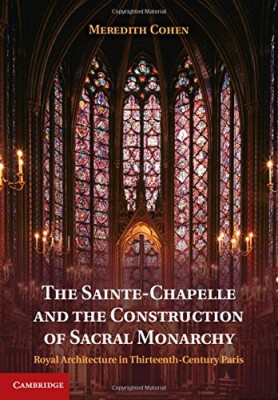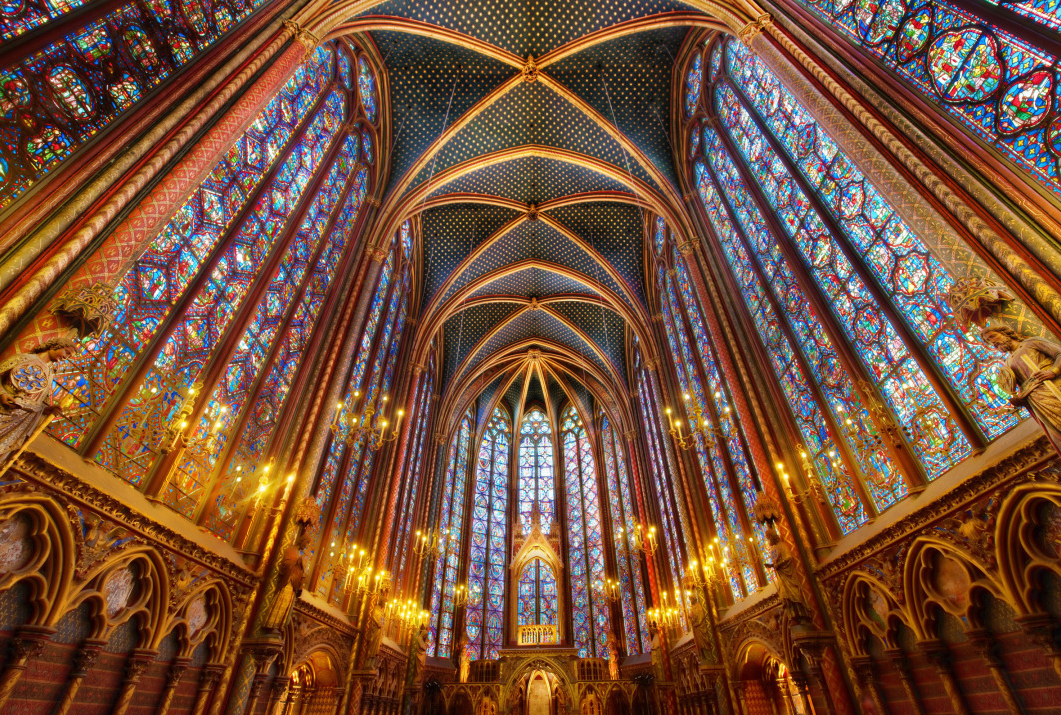New book presents Sainte-Chapelle in Paris as much more than a revered architectural and artistic masterpiece. It was also the crucible of the ideas of sacral monarchy forged in 13th century Paris
The Sainte-Chapelle and the Construction of Sacral Monarchy
Royal Architecture in Thirteenth-Century Paris
By Meredith Cohen
Cambridge University Press 2014
ISBN: 9781107025578
REVIEW:
In the 12th century the French King Philip August initiated a remarkable building program. His legacy were the standard French medieval castles with an archetypical quadratic layout with at least four towers in the corners and thick walls protecting stone halls inside as well as a nearly impenetrable donjon. This was foremost an extremely functional form of architecture which came to dominate the countryside as well as Paris, where the first Louvre was built on this formula. This Louvre was constructed right on the Northern outskirts of the medieval city of Paris, which he also fitted with a magnificent wall. Thus he combined both banks of the city an encouraged a marked immigration of what was busily being turned into a royal center of national importance. Vestiges of the wall may still be found around the city.
 However, the legacy to his grandson, the future Saint Louis, was not only a series of functional castles but also rather full coffers, which he at a later stage was able to use to forge a somewhat different architectural vision of what royal power was all about. As opposed to his grandfather the role Louis IX chose to fulfil was that of a saintly king and less that of a secular ruler. His inspiration was found in the streets of Paris where the new style – the more delicate Rayonnant – was being developed at the same time as the new form of mendicant piety evolved as a city phenomenon.
However, the legacy to his grandson, the future Saint Louis, was not only a series of functional castles but also rather full coffers, which he at a later stage was able to use to forge a somewhat different architectural vision of what royal power was all about. As opposed to his grandfather the role Louis IX chose to fulfil was that of a saintly king and less that of a secular ruler. His inspiration was found in the streets of Paris where the new style – the more delicate Rayonnant – was being developed at the same time as the new form of mendicant piety evolved as a city phenomenon.
In a new book about the construction of the idea of the sacral French monarchy the medievalist and art-historian Meredith Cohen follows this shift in artistic expressions through the oblique and unknown corners of medieval Paris. But she also and perhaps more specifically demonstrate how this inspiration was used to forge the Sainte-Chapelle, which in the general opinion may perhaps be the foremost example, but which is here considered as so much more than just a new archetypical edifice.
This is done by carefully analysing the building, its architecture, artistic embellishments and its spatial context at the front of the Palais de la Cité. But she also touches upon the complex liturgical performances, which were ordained by the king in his foundational charters as well as the way in which these liturgies and their artistic and architectural setting might be “read” as a continuous lesson in Sacral Monarchy. As such Sainte Chapelle did not only echo the royal and episcopal chapels elsewhere in Byzantium and Europe, it also presented itself as the temple of Solomon with Louis playing at being the new David – or rather David reincarnated as that the peculiar fusion of Christ and St. Francis, which was such an important part in the self-configuration of the king and future saint.
This book offers us thus a tour de force around the architecture, the artistic programme, the spatial layout, the liturgical construction and the practical use of the building of Sainte Chapelle. However, it also offers us so much more, not least an important sideways comment to the central question of whether Saint-Louis was his own construct (as Le Goff was the opinion of) or whether he was a later hagiographical myth. Although we do not know to what extent the king was involved in formulating the actual artistic programme, it seems safe to believe that he was not critical of it. He seems to have moved whole-heartedly into it, thus laying the foundation for what was to become the so very “French” idea of a Sacral Monarchy.
Meredith Cohen is naturally very careful in her conclusion, where she writes that “whether royal architecture was a conscious form of propaganda, can only be debated” (p. 199). But she also writes that “Louis throughout his whole life was acutely aware of his image”. We may add that neither is there a reason to believe that Louis was not acutely aware of the central role, which Sainte Chapelle was called to play as the crucible of sacral Monarchy; at least not after having read this commendable exposé thereof.
Karen Schousboe
TABLE OF CONTENTS:
- The making of a royal city: Paris and the architecture of Philip Augustus
- The Sainte-Chapelle: Parisian Rayonnant and the new royal architecture
- The architecture of sacral kingship
- Private, public, and the promotion of the cult of kings
- Louis’ later patronage in Paris
- Conclusion
- Appendices.
ABOUT THE AUTHOR
Meredith Cohen is Assistant Professor of Art History at the University of California, Los Angeles. She specializes in the art, architecture, and urban development of high medieval Europe, particularly in France and England. She has published articles on the Sainte-Chapelle, the Court Style, medieval Paris, nineteenth-century restoration, and the historiography of Gothic architecture. In addition, she has edited a series of interdisciplinary volumes on medieval history and culture. In 2010, she curated an exhibition (with Xavier Dectot) on medieval Paris at the Musée national du Moyen Âge. She has received fellowships and grants from the British Academy, the Châteaubriand Foundation, the Société des Professeurs de Français et Francophones d’Amérique, the Whiting Foundation, and UCLA for her research. Cohen is the founder and was the first president of the International Medieval Society of Paris, an interdisciplinary scholarly society based in Paris.
